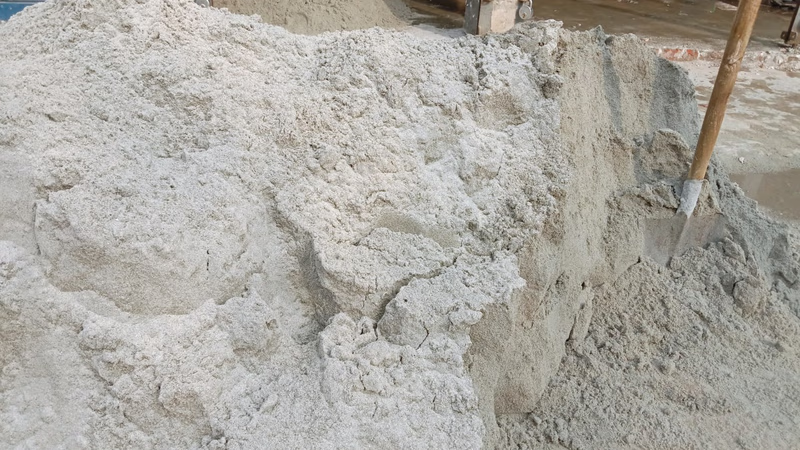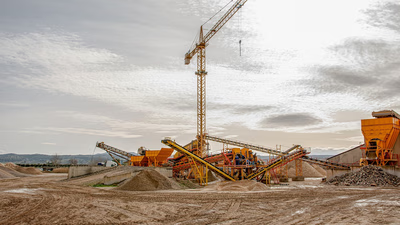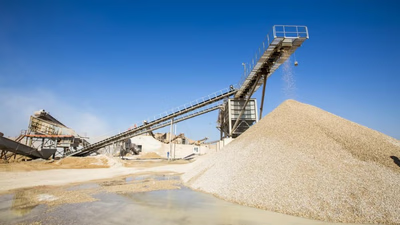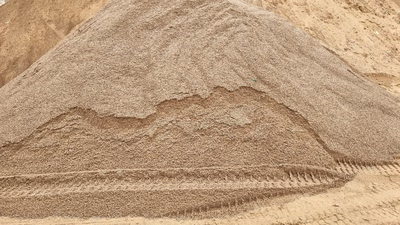
Sand"s role in construction: essential for concrete and landscaping. "
Sand is a granular material composed of finely divided rock and mineral particles. It is a common construction material used in various applications, including concrete production, masonry work, road construction, and landscaping. Sand is primarily composed of small fragments of quartz and other minerals. Sand is formed through the natural process of weathering and erosion. Over time, rocks are broken down into smaller particles through the action of wind, water, and ice. These particles are carried by rivers, streams, and ocean currents and eventually deposited on beaches, riverbeds, and other areas. The constant movement of water and the friction between the particles during transportation result in the smoothing and rounding of the sand grains.
Sand used in construction can be classified into different types based on its particle size and shape. Also known as "soft sand" or "brick sand," it has smaller particles and is often used in mortar mixes, plastering, and rendering. Also referred to as "sharp sand" or "concrete sand," it has larger particles and is commonly used in concrete production, bedding pipes, and paving. This type of sand has a higher proportion of larger particles and is used for filling voids, leveling surfaces, and backfilling trenches.
The properties of sand can vary depending on factors such as its composition, shape, texture, and gradation. The shape of sand particles can be rounded, angular, or a combination of both. Angular particles provide better interlocking and stability in concrete, while rounded particles result in workable and cohesive mixes. The distribution of particle sizes in sand is important for achieving desired properties in construction materials. Proper gradation allows for better compaction, strength, and workability.
Sand is commonly used for landscaping purposes, such as creating beaches, leveling lawns, and filling sandboxes. It is also used in the construction of sports fields, particularly for playing surfaces like golf course bunkers and volleyball courts. Sand is produced by crushing rocks. Coarse stones are produced from the crushing and separation of natural stones, and finer sands, in addition to stones, also contain shells and corals. In civil engineering, aggregates smaller than 75 mm and coarser than 4.75 are called sand. Sands are divided into two categories according to the source and type of grains used in construction.
Sand is one of the cheap materials in the construction industry, paying attention to it can provide you with useful information about the types of sand and its uses. In fact, it is interesting to know that sands and gravels are divided into different categories in terms of appearance, granulation, and chemical composition, which we will discuss in this article from Parshin Sazeh's blog; Therefore, according to this introduction, join Parshin Sazeh, the largest database of buildings under construction in the country, to learn more and better. Sand is the main part of concrete. Considering the resistance of concrete buildings against atmospheric factors and its longer life compared to metal and brick buildings; Also, due to the possibility of quick, cheap and easy procurement of materials that are used to build concrete buildings, which is the main part of sand, there is room for more studies on sand.
Clean sand is devoid of organic matter, clay, silt, and other impurities that can affect the performance of construction materials. Contaminated sand may lead to reduced strength, increased shrinkage, and durability issues. Natural sources of sand are primarily derived from riverbeds, coastal areas, and deserts. However, there is growing concern about the environmental impact of sand mining. Excessive extraction can lead to habitat destruction, erosion of riverbanks, and depletion of sediment supplies, causing ecological imbalances. Sustainable alternatives such as manufactured sand (produced by crushing rocks) and recycled sand (made from recycled construction and demolition waste) are being explored to mitigate the environmental impact.
Sand is a key component of concrete, providing strength, workability, and durability. It combines with cement, water, and aggregates (such as crushed stone) to form a solid and versatile construction material. Mortar, used for bonding bricks or stones in masonry construction, contains sand as a major ingredient. The sand in mortar provides cohesion and helps in achieving a strong bond between masonry units. Sand is used as a component of road base materials, providing stability and drainage. It is also used in asphalt mixes to improve traction and durability.
Sand can also be produced through artificial means, such as crushing and grinding rocks and minerals. In some cases, sand may be extracted from quarries or mined from sand deposits. However, it's important to note that excessive sand mining can have negative environmental impacts, including erosion and the destruction of habitats. Different regions and countries may have varying sources of sand based on their geological composition. Some areas have abundant natural sources of sand, while others may rely on imported sand to meet their construction needs. The quality and characteristics of sand can also vary depending on its source, which can influence its suitability for specific construction applications.




